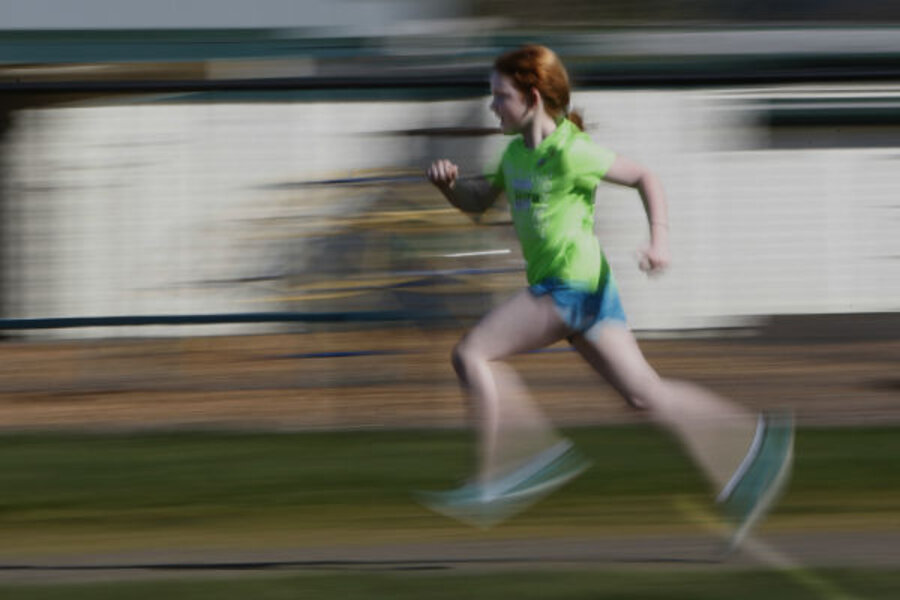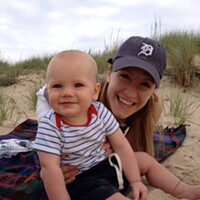How to set goals with kids: From marathons to better grades
Loading...
The Boston Marathon, one of America’s most iconic running road races, represents for many the pinnacle of setting goals. As the race approaches each year, we can read plenty of stories about runners – either in the news or on our personal Facebook feeds – lacing up their running shoes and logging hundreds of miles before race day.
What about kids taking on a similar challenge?
Two teachers, a father and daughter, at one school in Phoenix, Ariz., helped hundreds of students in fifth through eighth grades complete the Arizona Half Marathon in February. Terry and Amy Labrecque, who work at Desert Horizons Elementary School, have been coaching students in running for a decade, and helped 145 students, roughly 40 percent of the fifth- through eighth-grade students, complete the race in 2015.
The school is a Title I school which serves low-income students and has no organized sports available.
According to a Runner’s World story on the students' accomplishments, the after-school training program began with a single lap around the school at the beginning of the school year and a commitment from each child to set the goal to run the race.
When it came to the team aspect, Amy Labrecque told Runner’s World that the group developed a family dynamic.
”We’re able to understand them on a level that we can't get in a classroom. Even before the race, you can see a change in their behavior. They know that someone's out there who cares,” she said.
The combination of good coaching; a support network of peers; and a solid, reachable goal helped the students achieve a sporting feat that many adults only prescribe to a bucket list.
How do we harness the value of setting goals with kids, whether it is something as major as a half-marathon, or perhaps even getting a better grade in a subject in school?
I spoke with Megan Searfoss, author of the blog RunLikeAMother.com and the book “See Mom Run,” released in December 2014, and asked her about her advice in encouraging kids to set goals and stick to them, like the students in Arizona.
A multi-sport athlete with three grown children of her own, Ms. Searfoss is also the coach of Team Stonyfield, a group of nine family-focused female bloggers who will run the Boston Marathon on April 20. The team is raising funds to support Girls on the Run, a nonprofit organization which encourages school-age girls to build confidence and healthy living habits through running.
Searfoss also speaks with groups of women and girls about setting goals and creating healthy lifestyle routines. One her biggest concerns is the amount of time she sees girls spending on smartphones, interacting with friends while remaining sedentary.
While her specific advice is based on fitness goals for kids, many of the same ideas can be applied to setting goals in other aspects of life.
Searfoss feels parents are paramount in helping kids set goals and serving as role models. From a fitness perspective, she feels this is especially important when older kids begin to look beyond team sports in school and toward healthy living as young adults.
“We need to do a better job of showing them that exercise is as normal as brushing your teeth,” Searfoss says.
She mentions that for little kids, prior to a focus on goal setting, there is an importance of getting out and playing alongside kids, and showing them that you as a parent take time to stay active.
And, just like an adult needs to motivate themself to try a new challenge, kids respond to rewards as well. Searfoss asserts that rewards can be something as simple as a sticker or a journal celebrating little advances along the way to a bigger achievement.
She uses an individual sport like running as an example of an activity that that can help kids see a direct correlation between work and progress.
“You can see your progression in time drops, in distance achieved, and it’s all up to you,” she says.
She also points to the value of parents setting goals with their kids that they can complete at the same time. For example, Searfoss says that a parent could choose to register themselves and their kid for a running race on the same day. Many road races around the country offer options for children’s runs that coincide with longer road races.
The same principles of working with a kid to set fitness goals as Searfoss recommends can apply in other aspect of a child’s life as well.
Marie Faust Evitt, early childhood educator and co-author of the book “Thinking Big, Learning Big” (2009) has written about the benefits of goal setting with kids. In a piece for Parents magazine, Evitt talks about concrete steps to set goals.
She stresses the importance of starting small, letting kids choose their own goal, parents showing their kids the goals they have set for themselves, providing a reality check if the goal is too big, and applauding the effort.
Evitt lists five tips to follow when setting goals, citing Jim Wiltens’ “Goals Express” (1995), including: Writing the goal down, making it specific, considering pros and cons, defining small steps toward the goal and who can help with achieving them, and monitoring progress.
Some of the most important advice Evitt offers is what to do when kids fall short of goals. Using the goal of getting good grades in school as an example, Evitt encourages parents to go back and review the original goal and work with the child to see where it might have been difficult to follow through. She encourages still praising what progress has been made and never issuing a punishment for a missed goal.
Just like a marathon isn’t run without training, setting and achieving goals might not happen without a few hiccups along the way. Both Searfoss' and Evitt's advice celebrates the steps in the journey, versus focusing only on the finish line at the end.








